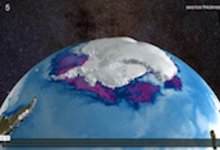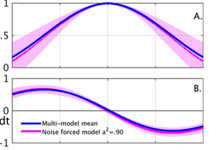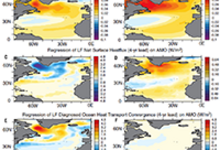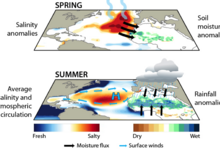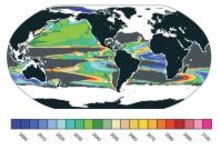Research Highlights
We aim to feature the latest research results from US scientists whose published paper features work that is sponsored by one or more sponsoring agency programs of US CLIVAR (NASA, NOAA, NSF, DOE, ONR). Check out the collection of research highlights below and sort by topic on the right. Interested in submitting an article for consideration? See our Research Highlight Submission Guidelines page for more information.
Recent trends in sea ice have been studied heavily. A less well-understood problem is how sea ice affects the underlying ocean, particularly the poorly observed Southern Ocean. A new study, published in the journal Nature Geoscience, shows how the seasonal drift of Antarctic sea ice may be more important for the global ocean overturning circulation than previously realized.
The Atlantic Multidecadal Oscillation (AMO) is a naturally occurring pattern of sea surface temperature change that is seen in the North Atlantic Ocean on decadal timescales and affects weather and climate. Some have suggested that the AMO is a consequence of variable large-scale ocean circulation. Yet new research by Clement and coauthors suggest otherwise.
In a recent technical comment, Zhang et al. show that ocean dynamics play a central role in the Atlantic Multidecadal Oscillation (AMO), and the previous claims that “the AMO is a thermodynamic response of the ocean mixed layer to stochastic atmospheric forcing, and ocean circulation changes have no role in causing the AMO” are not justified.
Ocean-to-land moisture transport leaves an imprint on sea surface salinity, making this “nature’s rain gauge” to measure the variations of the water cycle. Two new studies provide strong evidence that salinity in the subtropical North Atlantic is a skillful predictor for precipitation in the African Sahel and the US Midwest.
There is very little doubt that human-driven climate warming will ultimately result in widespread ocean deoxygenation; however, substantial natural variation and sparse observational records make it difficult to determine when. New research suggests that human-driven changes in oxygen levels are evident in many oceanic regions now and will be widespread in the next 15-20 years.

